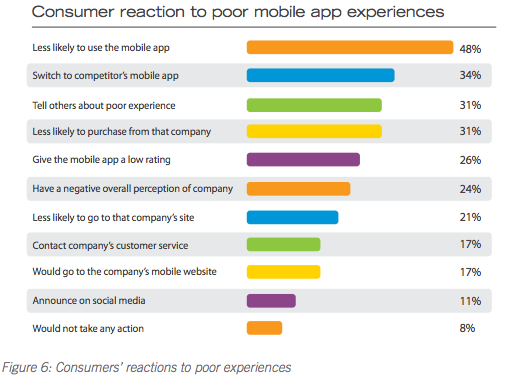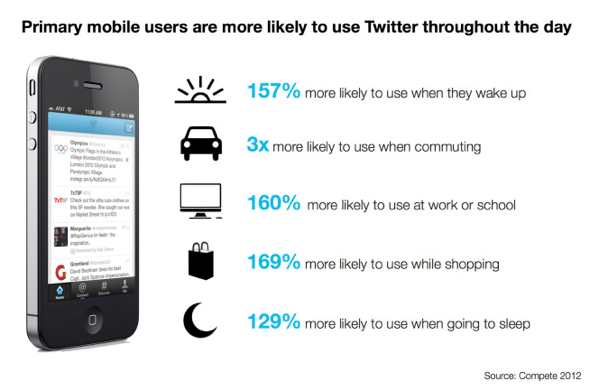Study: Consumers prefer mobile apps to mobile websites
After yesterdays moderation of the dmexco Night Talks in Hamburg on “Mobile – The new first screen”, a recent study grabbed my attention this morning. It makes clear that users really are more into apps rather than mobile websites. According to the findings of the global study from Compuware Corporation, a technology performance company, 85% of consumers responded that they prefer mobile apps over mobile websites.
Although the latest InMobi study gives insights how people react to mobile advertising and why apps get into the centre of attention of the mobile user, the study from Compuware states that the reason why apps become so popular these days. The respondents said that they are “more convenient, faster and easier to navigate.” Furthermore, it adds some more findings…
“Mobile applications are thought to make life easier by streamlining calendars and grocery lists (…) offering entertainment while in line and making it easy to collaborate with co-workers. Consumers now associate apps with banking, paying bills, shopping, booking hotels and travel, as well as with staying productive and connected with both home and office tasks.”
The 3Rs of the social customer also become apparent in the choice of which apps will be downloaded to their mobiles. 84% of users say app store ratings are important in their decisions to download and install a mobile app. And there are some obvious reasons how apps need to deliver in order to be be benefitial…
– Easy access to product and store information
– Help planning and navigating trips
– The ability to communicate in real time
However, the benefits seem quite clear, there are also some complaints about mobile apps. The mobile users mentioned that they had…
– 62% a crash, freeze or error.
– 47% slow launch times.
– 40% an app which just would not launch.
Still tolerance is high when the app does not work immediately. 79% said, they would retry a mobile app only once or twice if it failed to work the first time. Still, companies and brands should be aware that the competitor is not too far away with their mobile app offering.

“With consumers expecting greater experiences with mobile apps now more than ever, fulfilling those expectations doesn’t just happen — it takes a conscious effort throughout every stage of the design and development process to get it right. Performance is a crucial contributor to providing a dependable mobile app user experience, so performance should be considered a key driver in the design process. Mobile applications need to focus on a core utility, and they need to be fast and reliable in order to be valuable.” Stephen Pierzchala, Technology Strategist, Compuware APM Center of Excellence.
It would be interesting to get your expectation on a good mobile app or website? What is your normal reaction when mobile apps don’t deliver to your expectation?








 Spot On!
Spot On!

 While Facebook turns more and more to search and ad exchange budgets, Google is still riding the mobile wave. In many moderations over the last two years, I could listen to their attitude towards building mobile websites, and why these are important to the business of the future. However, companies often resist to face the mobile evolution and still stick to their conventional desktop websites. Not to mention what this does to their brands when the user experience is driving into a nightmare of usability and readability.
While Facebook turns more and more to search and ad exchange budgets, Google is still riding the mobile wave. In many moderations over the last two years, I could listen to their attitude towards building mobile websites, and why these are important to the business of the future. However, companies often resist to face the mobile evolution and still stick to their conventional desktop websites. Not to mention what this does to their brands when the user experience is driving into a nightmare of usability and readability. One-on-one interview with Ed Brill
One-on-one interview with Ed Brill